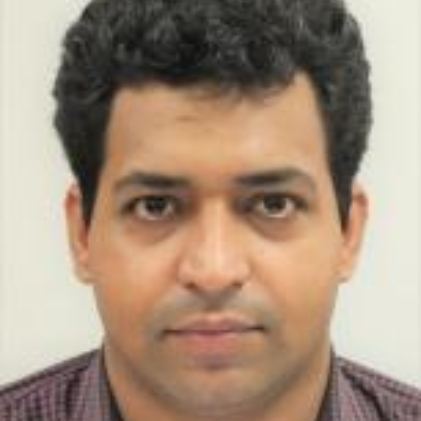
Hafiz Suliman Munawar
Work place: University of New South Wales (UNSW) Sydney, Australia
E-mail: h.munawar@unsw.edu.au
Website:
Research Interests: Computer systems and computational processes, Artificial Intelligence, Computational Learning Theory
Biography
Hafiz Suliman Munawar is a PhD student at the University of New South Wales (UNSW), Australia. He is a multi-disciplinary researcher with experience in machine learning, disaster management and artificial intelligence. Hafiz has several international publications in various
journals and conferences and has actively been working on disaster managemen
Author Articles
Reconfigurable Origami Antennas: A Review of the Existing Technology and its Future Prospects
DOI: https://doi.org/10.5815/ijwmt.2020.04.04, Pub. Date: 8 Aug. 2020
Owing to the much-gained popularity and unique properties of origami antenna, a review of some of the important types of these antennas is conducted. Origami is an ancient paper folding technique which has many applications in technical and non-technical fields. With the growing trend of utilizing origami concept, it was integrated with the electromagnetic field to realize reconfigurable antennas. This review contains some of the important applications in which the origami antennas are widely used to make the system more efficient. The development of the antennas over the years and some state-of-the-art designs are discussed along with the future trends in design and manufacturing of origami antennas. Some unique abilities of origami antennas which make them better choice than other antennas are smaller size and volume in addition to being light weight, cost efficient and easily manufacturing. They are widely used to reduce the size of bulky antennas which is very handy in many space and air borne facilities and provide reconfigurable frequency. They are even used to provide mobile range in far off regions which are not accessible with the use of ordinary antennas. The field of antenna design is vast and provides a lot of room for further advancements which are covered in future trends of the paper. This paper provides a detailed review of the different designs of antenna and points towards possible future enhancements and state of the art designs for the fabrication of antenna.
[...] Read more.Applications of Leaky-wave Antennas: A Review
DOI: https://doi.org/10.5815/ijwmt.2020.03.05, Pub. Date: 8 Jun. 2020
This review discusses some of the widely used applications of Leaky-wave antennas (LWA) along with their certain types. LWAs have been used extensively in various fields since their origin in the 1940s. They provide wide range of applications that include radars, human sensors, imaging and satellite communication. These antennas have advantage of frequency scanning in a single sweep which make them better choice for frequency scanning applications. Different techniques are integrated with them which increase their importance by providing ease of fabrication and low-profile system. In addition to discussing different types of LWA, this paper contains a comparative analysis of these types which helps in providing a clear knowledge of how and where these antennas can be used. Most of the antenna parameters have a tradeoff between gain and radiation patter, for which careful evaluation of these parameters is needed to make a choice for antenna. Slight modification in the antenna renders great increase in its performance or sometimes degrade it as well. LWA are used for 5G applications which is the latest trend and has great potential of development in coming years. Recent advances in LWA put emphasis on attaining radiations at the broadside which is a challenge for them. The challenges and possible future directions which can draw from existing data have been briefly discussed in this review. To form this review, 15 papers from last 6 years are considered which discusses various parameters of these antennas like radiation pattern, directivity and their fabrication complexities.
[...] Read more.An Overview of Reconfigurable Antennas for Wireless Body Area Networks and Possible Future Prospects
DOI: https://doi.org/10.5815/ijwmt.2020.02.01, Pub. Date: 8 Apr. 2020
The use of antennas in various fields and applications is gaining much importance because of their growing advancements and numerous facilities. Due to their vast advantages, now wearable antennas are used in fields of personal healthcare, entertainment, military and many others. For the fabrication of wearable antennas, many aspects need special consideration in order to manufacture a safe system for the user. As the applications of wireless body centric communication with antennas has a great variability, so enhancements are made in the systems by integrating reconfigurable antennas in it. These antennas work better than the single installed antennas because of their adjustable parameters thus increasing the performance of whole system. This paper provides an overview of the existing antennas and their applications, in order to better understand ways in which the limitations associated with wearable antennas could be overcome in the future. Certain design challenges which occur during the fabrication of wearable antennas like safety, cost and tolerance in addition to the recent advancements in this field are discussed. Designing a particular antenna for body area network mainly depends upon the application of the user and the place of installation. To build a review about the reconfigurable antenna for body centric communication, 15 papers from the last 6 years are consulted which fall under the domain of wearable antennas. There is still a margin of improvement in this field and better technologies will be introduced in coming years which include precision medicine.
[...] Read more.Other Articles
Subscribe to receive issue release notifications and newsletters from MECS Press journals